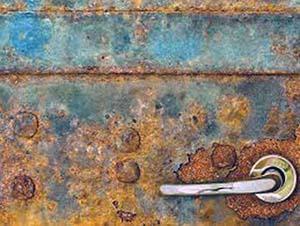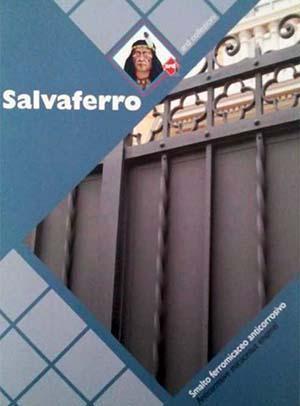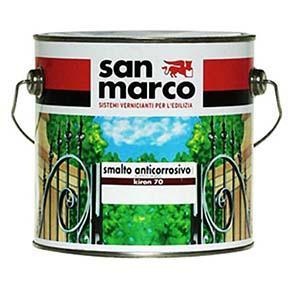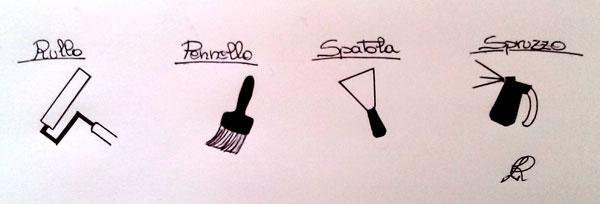Noncorrosive micaceous enamel
Post from EditorialsIron micaceous iron are suitable to protect iron artifacts from various casualties like weather, ultraviolet radiation and rust.
No more rust on iron structures, with the micaceous iron enamel
 Articles of iron are quite common in residential areas and not only, as well as having a singular charm, if well maintained they also have a long life and durability.
Articles of iron are quite common in residential areas and not only, as well as having a singular charm, if well maintained they also have a long life and durability.
The renovations often include, among the interventions to be performed, the recovery of the metal elements, in particular the external ones, deteriorated by the atmospheric factors, with loss of aesthetic beauty and real threat to the manual contact, due to rust and corroded surfaces.
This type of material should be treated early on with the specific base and finishes so to reduce the need for routine maintenance and repairs, to have them always bright and above all protected against corrosion.
Among the various protective substances, we have the micaceous iron noncorrosive enamels paints containing elements through which we fight the loss of strength of the metal, therefore, corrosion and deterioration.
The enamel, already in itself is a waterproofing coating; in addition, this type mentioned is constituted by micaceous iron oxide, lamellar aluminum, zinc phosphate and specific synthetic resins.
It is a particular kind of synthetic enamel containing mica, a mineral through which one has the aesthetic output of a metal. The mica belongs to the group of phyllosilicates, therefore, silicates, mineral mainly composed of oxygen and silicon, characterized by flaking, with layered structure.
 Countless are the properties that distinguish this product, including:
Countless are the properties that distinguish this product, including:
- Keep water as barrier element;
- Obstruct ultraviolet radiation as a protective shield of the underlying layers;
- Protect from moisture and any marine corrosion.
The colors and effects available on the market vary according to the companies but essentially are: black, brown, gray, gun metal, wrought iron, green, copper, gold, all with different tonal gradations, from lightest to darkest.
The company Ard Raccanello offers, among other products, finishes for iron, or namely the enamels called by the name of Salvaferro, as well as the paint factory San Marco that, always among the glazes and base products, presents Kiron 70, a glaze micaceous noncorrosive effect.
The company Paramatti, a trademark of J Colors SpA, provides the water base Ferromicaceo, high-performance component coating.
Mode of applications
 The first operation is to prepare the support; if the surface has never been treated or painted, it is appropriate to sprinkle the specific thinner for iron, so as to degrease, remove the mill scale and any traces of rust, perhaps with the use of a wire brush and emery cloth.
The first operation is to prepare the support; if the surface has never been treated or painted, it is appropriate to sprinkle the specific thinner for iron, so as to degrease, remove the mill scale and any traces of rust, perhaps with the use of a wire brush and emery cloth.
Having done this, clean the surface and proceed with the painting of the members with the glaze, twice, in order to create two protective layers in the selected color and in the required finish.
If the area to be painted has already been treated and it is degraded, you have to remove the traces of rust, as noted above, as well as those of painting now deteriorated, by sanding.
Subsequently, the entire surface is cleaned, acting methodically on corroded parts with enamel specific and finally, after a day of drying, pass two more layers of enoncorrosive micaceous enamel.
This type of enamel is also used for other materials in addition to iron, and therefore, if you have to enamel a zinc sheet, is appropriate to remove zinc salts, degreasing with detergent and water or with a solvent, apply a water primer on a dry surface.
Quite similar is the preparatory procedure to treat elements of aluminum or other alloys, since, after a complete cleaning and superficial grease removal, you apply a primer and to follow two coats of noncorrosive product.
You should not proceed if you are in the presence of excessive moisture or extremely cold temperatures or too high, then be careful not to apply the glaze on surfaces exposed to sunlight, therefore overheated.
The substance contained in the jar must be well mixed before and during the application, so as to make a uniform color.
In addition, the product should be consumed quickly by closing the container thoroughly, then flipping it, and guarding it in a cool place with a temperature greater than five degrees centigrade, away from direct heat sources.
The implementation can be performed with the aid of a brush, spatula, air spray or roller.
The spray gives, especially when used for the last step, a finish more precise and more uniform.
In the drawing below were sketched some symbols related tools to use, graphic symbols on the cans of products alongside the instructions of use.
In short, with this type of enamel, you can treat any iron artifact: from railings to fences, from gratings on balconies and many other members and objects, giving them a metallic look rather than antique or even like wrought iron, improving the aesthetic look and especially ensuring greater safety to the touch.
It is preferable, however, before the purchase of material, contact an expert, to see a photo of the area where you want to intervene or, if possible, watch it live along with the technician, and then choose the right product to meet your needs and finally proceed with the application, performing the necessary instructions in the package.
79806 REGISTERED USERS










